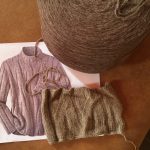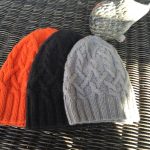 Wool is also extremely resilient and highly extensible, which essentially means you can stretch it a third of its length, or two-thirds when wet, and it’ll recover to its original shape. Despite over a century of effort, not a single manmade fiber yet possesses all those amazing qualities.
Wool is also extremely resilient and highly extensible, which essentially means you can stretch it a third of its length, or two-thirds when wet, and it’ll recover to its original shape. Despite over a century of effort, not a single manmade fiber yet possesses all those amazing qualities.
The natural length of a fiber varies, depending on the sheep breed and the frequency of shearing – here we are assuming the standard cycle of twice a year. A general rule is: the shorter the fibers, the softer they will be against the skin. But as with all good things, there is a drawback in terms of wearability. Since abrasion attracts the ends of fiber, working them loose from the fabric until they form pills, the more fiber ends you have per 2.5 cm (1 inch) of yarn, the greater the number of pills you may get. This is why even the best Merino yarn may eventually pill.















